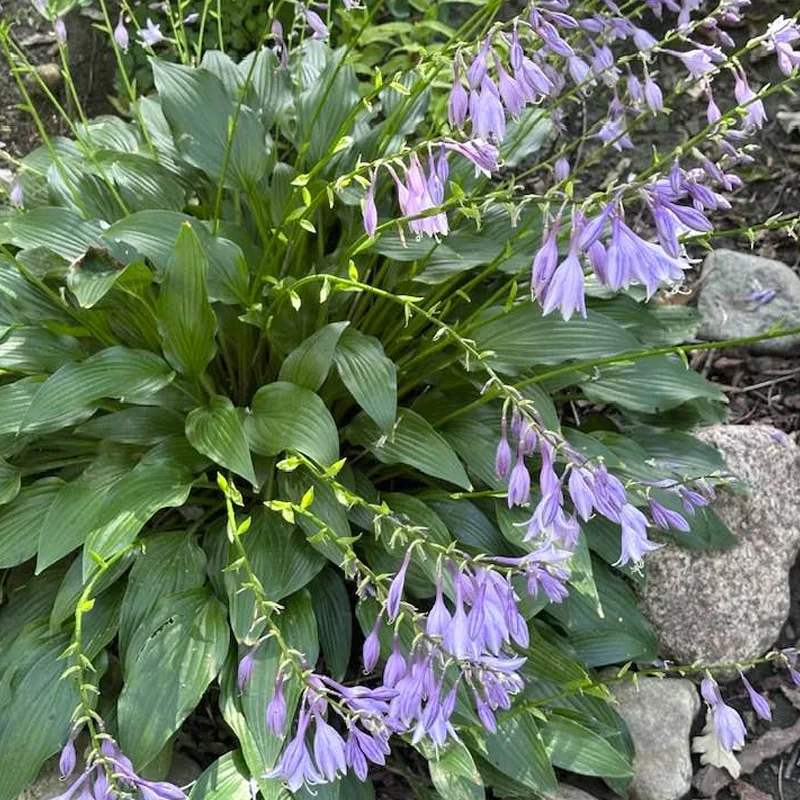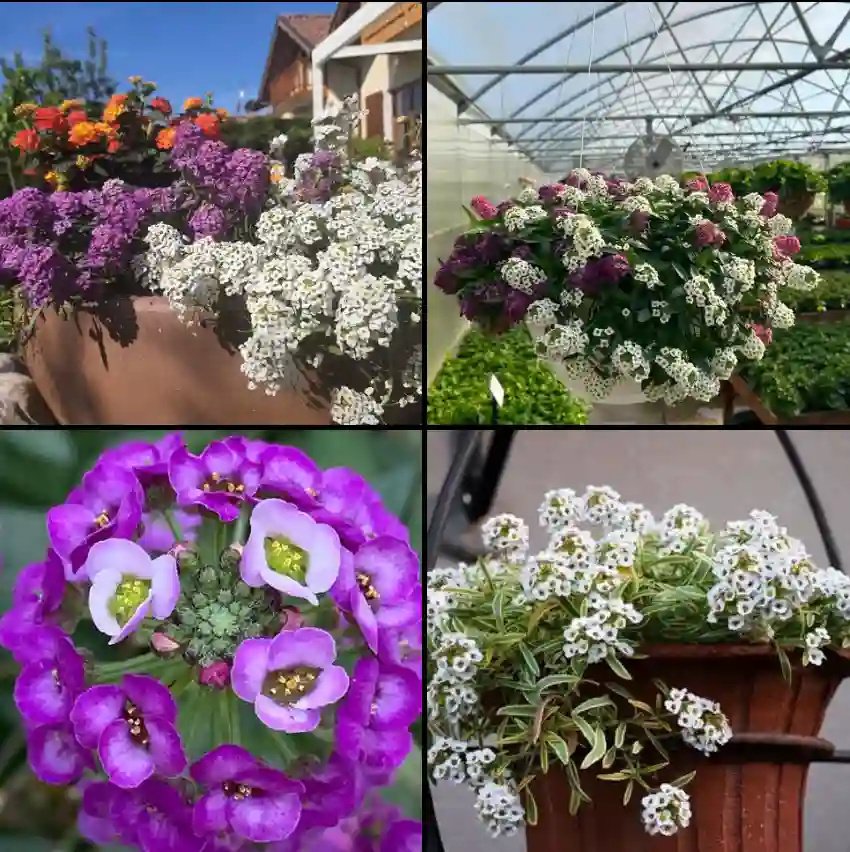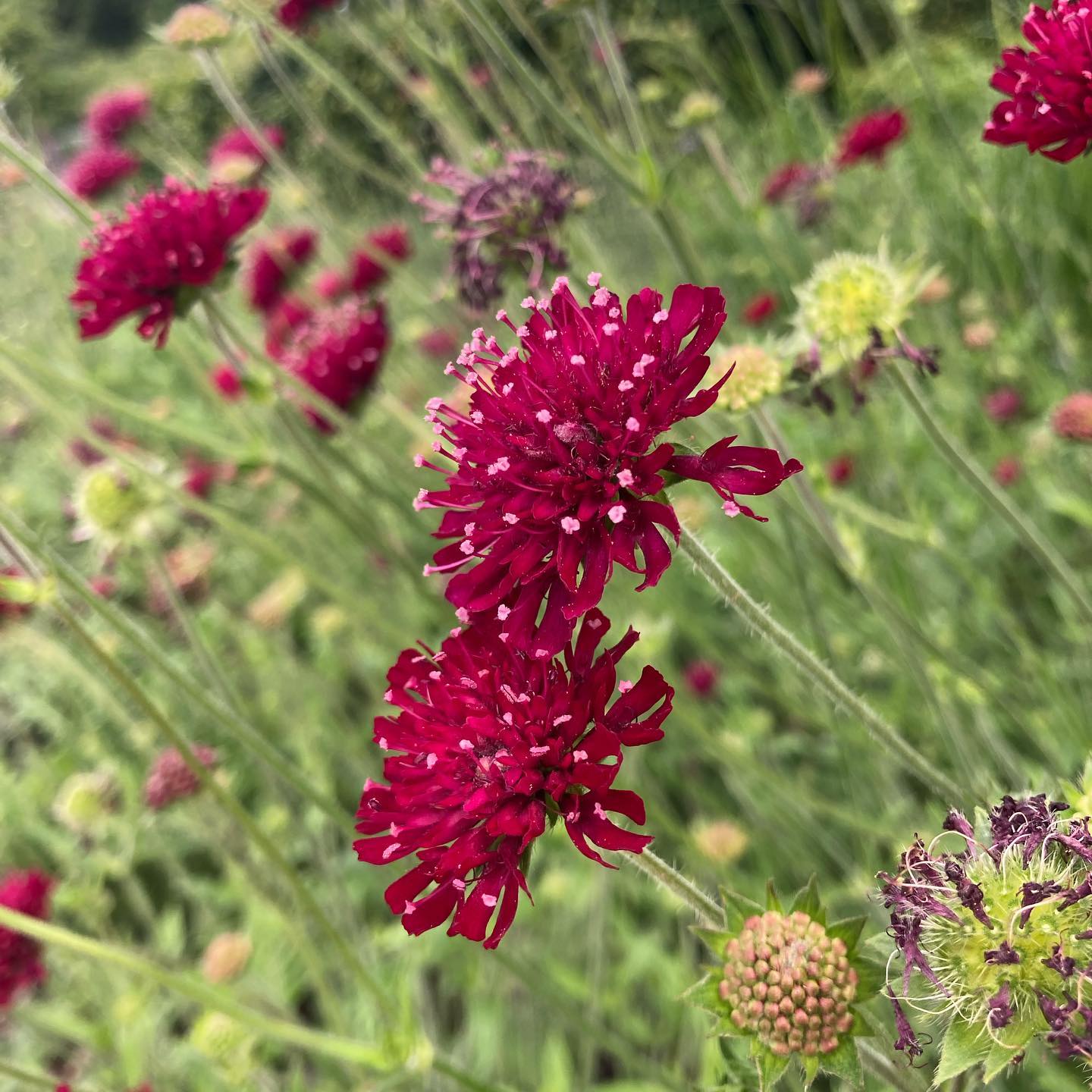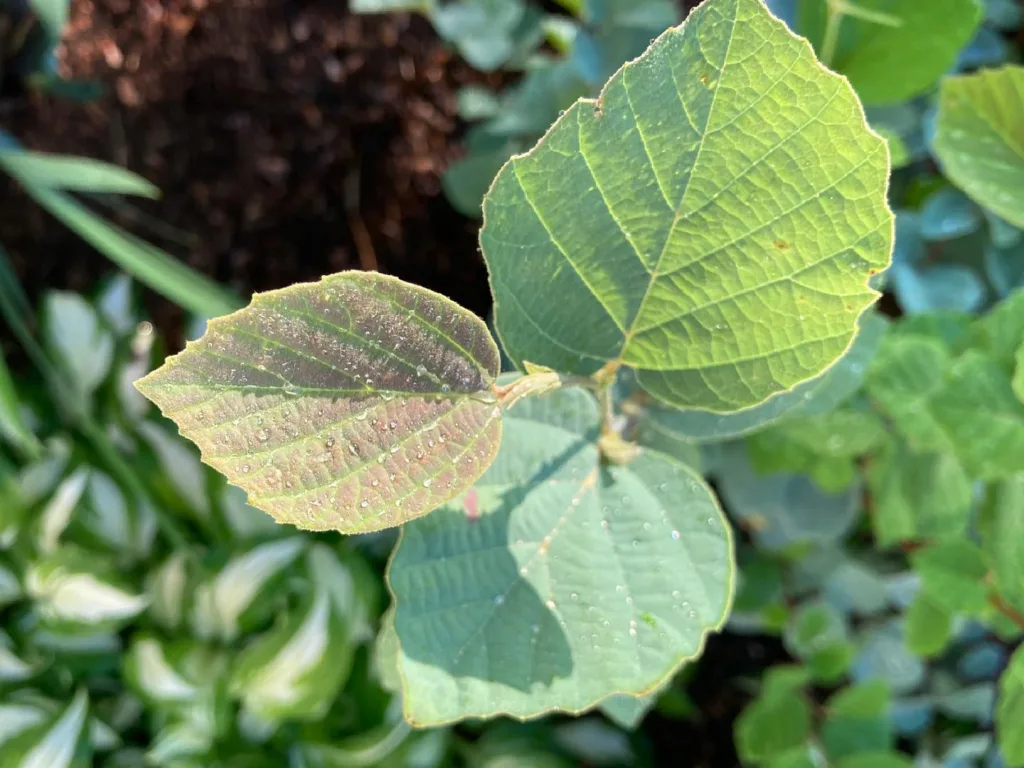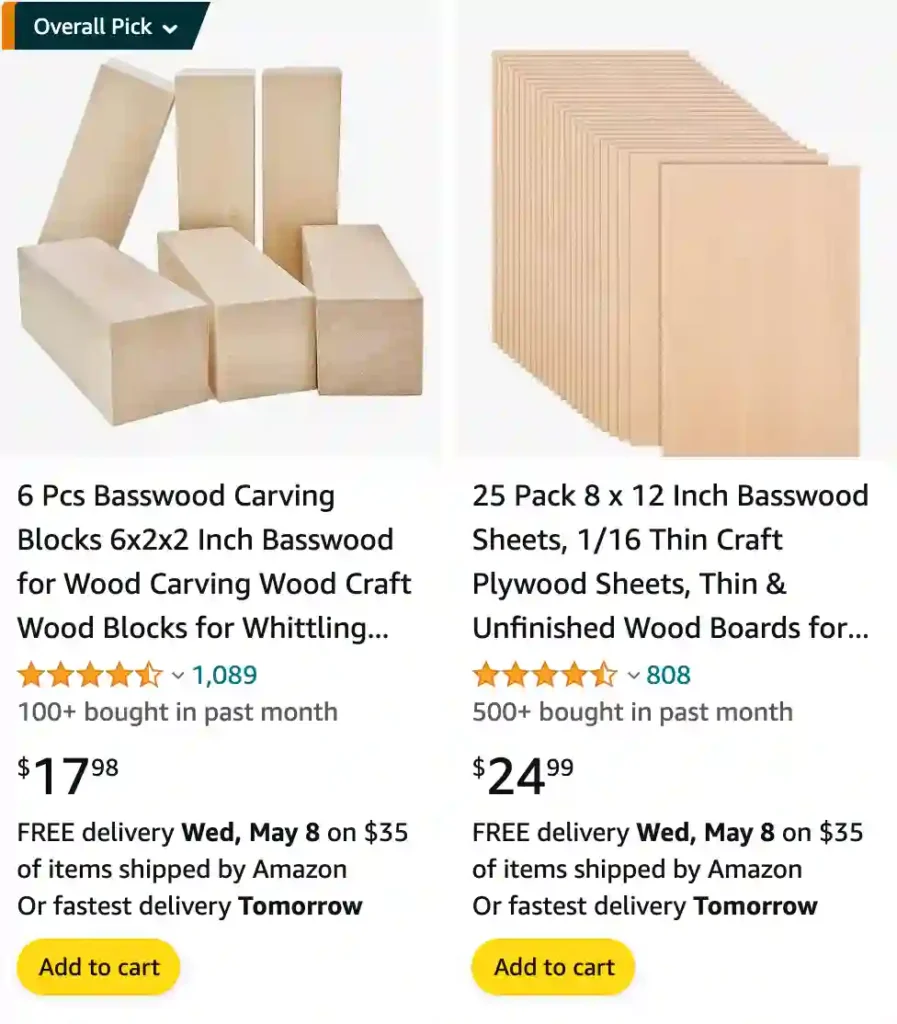
What is basswood?
Basswood! That’s a type of wood I love working with. It’s incredibly soft and smooth, almost like balsa wood, but a little sturdier. Remember that time I tried carving a simple spoon out of oak? It was a disaster! The wood was so tough, my knife kept slipping, and I ended up with a chipped mess. But basswood? It carves like butter. I recently made a little decorative box out of it, and I could really let the details shine through. It’s perfect for whittling down to fine points and curves. Plus, the light color takes paint beautifully, so I can really get creative with designs.
Basswood vs Balsa
When I work on detailed model projects, I tend to prefer balsa for its incredible lightness and ease of cutting. However, basswood, while slightly denser, offers a sturdier feel, making it better for projects that need a bit more durability.
Basswood vs Alder
Alder has a beautiful grain that I appreciate for furniture making, but basswood wins me over for carving. Its fine, even texture makes it much easier to work with when I’m using detailed tools and intricate designs.
Basswood vs Linden. Are basswood and linden the same?
Yes, basswood and linden are the same. In North America, we call it basswood, while in Europe, it’s known as linden. It’s the same tree, just different names in different regions.
Basswood vs Mahogany
Mahogany’s rich, deep color and durability make it my choice for fine furniture and musical instruments. Basswood, on the other hand, is my go-to for carving and hobby projects because it’s much easier to shape and less expensive.
Basswood vs Poplar
I like using poplar for larger projects like furniture or cabinets because it’s stronger and has a nicer grain. But for smaller, more detailed work, basswood’s softness and ease of carving make it my favorite.
Basswood vs Baltic Birch
Baltic birch is fantastic for sturdy, durable plywood, especially in cabinetry. Basswood, though, is what I reach for when I’m working on carvings or models, thanks to its ease of use and smooth finish.
Basswood vs Pine
Pine is great for rustic furniture with its distinct knots and resinous quality. However, when I’m carving or need a softer wood that’s easier to work with, basswood is my top choice.
Basswood vs Agathis
I’ve used agathis for some musical instruments because of its tonal qualities. But for carving and hobby projects, basswood is much easier to work with due to its softness and fine grain.
Basswood vs Ash
Ash’s strength and shock resistance make it ideal for tool handles and sports equipment. When it comes to carving and crafting detailed pieces, though, I always prefer basswood for its smoother texture and ease of use.
Basswood vs Birch
Birch is beautiful for furniture and cabinetry due to its hardness and fine grain. For carving, though, I stick with basswood because it’s softer and easier to work with, especially for detailed work.
Basswood vs Cedar
Cedar’s aromatic qualities and natural insect resistance make it great for closets and chests. For carving and crafting, however, I find basswood much more manageable and enjoyable to work with.
Basswood vs Chipboard
Chipboard is useful for budget-friendly furniture and construction projects, but it can’t match the carving and finishing quality of basswood. Basswood is just so much nicer for any detailed or artistic work I do.
Basswood vs Cottonwood
Cottonwood and basswood are both soft, but basswood has a more uniform texture, which I find better for carving. Cottonwood tends to have more irregularities that can make detailed work challenging.
Basswood vs Maple
Maple is gorgeous for furniture and has a wonderful hardness for durability. When I need something softer and more forgiving for carving, basswood is my go-to, as it’s much easier to work with.
Basswood vs Paulownia
Paulownia is impressively lightweight and has great resistance to warping, which I appreciate for certain projects. However, basswood is far superior for carving because it has a more consistent texture and is easier to work with.
Basswood vs Plywood
Plywood’s strength and versatility are unbeatable for structural projects and furniture. For carving and modeling, though, basswood’s softness and fine texture are much better suited to the task.
Basswood vs Rosewood
Rosewood’s rich color and density make it a favorite for high-end musical instruments and furniture. However, for carving, basswood is much easier to work with due to its softness and fine grain.
Basswood vs Spruce
Spruce is great for soundboards in musical instruments because of its resonant qualities. When I’m doing carving or fine detail work, though, basswood is my preferred material because it’s easier to handle.
Basswood vs MDF
MDF is practical for affordable furniture and cabinetry, but it doesn’t carve well. For any projects where I need to carve or shape the wood intricately, I always choose basswood for its smooth texture and ease of use.
Is basswood a hardwood?
Yes, basswood is technically a hardwood, but it’s one of the softer hardwoods, which is why I find it so easy to carve and work with on detailed projects.
Where to buy basswood?
I usually buy basswood from local craft stores or specialized woodworking shops. Online retailers also have a good selection, and I often find what I need on websites like Amazon or woodworking supply sites.
How to cut basswood?
Cutting basswood is a breeze with the right tools. For larger pieces, I use a bandsaw or jigsaw. For finer, more detailed cuts, a sharp hobby knife or a scroll saw works perfectly.
Is basswood good firewood?
While basswood can be used as firewood, it’s not the best choice because it burns quickly and doesn’t produce a lot of heat. I prefer using denser hardwoods like oak or maple for my fireplace.
What is basswood used for?
I use basswood for a variety of projects, from carving and modeling to creating musical instruments. Its softness and fine grain make it versatile and easy to work with for detailed and artistic projects.
Is basswood good for guitars?
Yes, basswood is actually quite good for guitars, especially electric ones. It has a balanced tone and is relatively lightweight, making it comfortable to play.
Where do basswood trees grow?
Basswood trees are native to North America, and I often see them growing in rich, moist soils along streams and in valleys. They’re quite common in temperate forests.
Is basswood good for carving?
Absolutely, basswood is one of my favorite woods for carving. Its fine, even texture and softness make it perfect for detailed work and it’s very forgiving for beginners and advanced carvers alike.
Can you stain basswood?
Yes, basswood can be stained, but it tends to absorb stains unevenly. I usually apply a pre-stain conditioner to ensure a more uniform finish and enhance the final look of my projects.
Is basswood good for cutting boards?
I wouldn’t recommend basswood for cutting boards because it’s too soft and can easily be damaged by knives. Harder woods like maple or walnut are much better suited for that purpose.
What does a basswood tree look like?
Basswood trees have large, heart-shaped leaves and a straight, tall trunk. They often have a rounded crown and can grow quite tall, making them a beautiful addition to any forest landscape.
Are basswood shutters good quality?
Basswood shutters are great quality because the wood is light, yet strong, and it takes paint and stain well. I like how they add a touch of elegance to windows while being functional.
Can you cut basswood with an exacto knife?
Yes, you can cut basswood with an X-Acto knife, especially for smaller, detailed projects. The softness of the wood makes it easy to achieve precise cuts without too much effort.
Concluding the Journey: The Beauty of Basswood
In conclusion, the Basswood, with its stunning appearance and easy maintenance, stands as an excellent choice for landscape enthusiasts seeking a shade tree with magnificent seasonal blooms. My personal journey with this remarkable tree has been filled with awe and appreciation for its beauty. By selecting the right species, providing proper care, and vigilantly addressing potential issues, you too can enjoy the beauty and benefits of Basswood in your garden for generations to come. Happy gardening!
If i die, water my plants!
